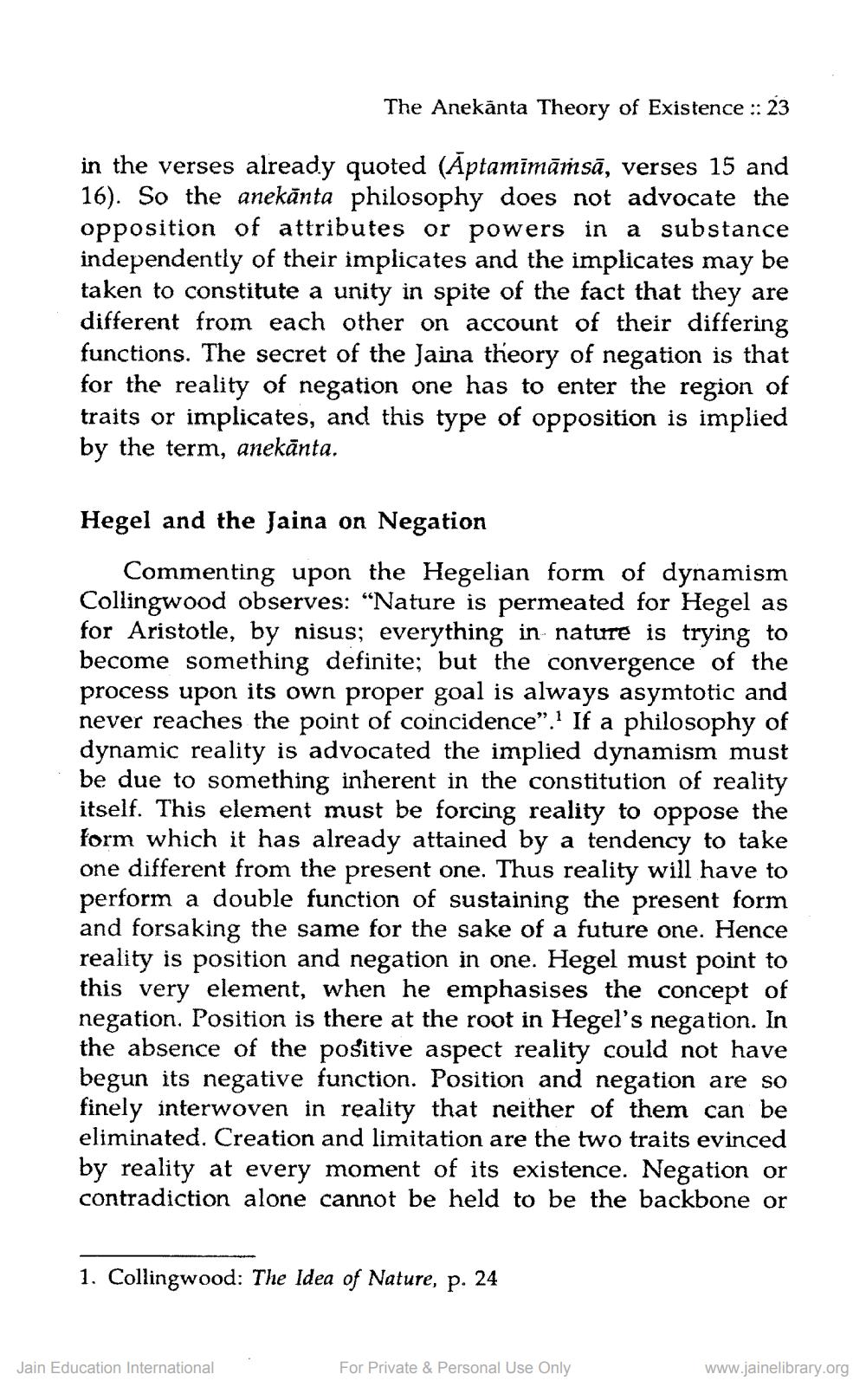________________
The Anekānta Theory of Existence :: 23
in the verses already quoted (Aptamīmāṁsā, verses 15 and 16). So the anekānta philosophy does not advocate the opposition of attributes or powers in a substance independently of their implicates and the implicates may be taken to constitute a unity in spite of the fact that they are different from each other on account of their differing functions. The secret of the Jaina theory of negation is that for the reality of negation one has to enter the region of traits or implicates, and this type of opposition is implied by the term, anekānta.
Hegel and the Jaina on Negation
Commenting upon the Hegelian form of dynamism Collingwood observes: “Nature is permeated for Hegel as for Aristotle, by nisus; everything in nature is trying to become something definite; but the convergence of the process upon its own proper goal is always asymtotic and never reaches the point of coincidence". If a philosophy of dynamic reality is advocated the implied dynamism must be due to something inherent in the constitution of reality itself. This element must be forcing reality to oppose the form which it has already attained by a tendency to take one different from the present one. Thus reality will have to perform a double function of sustaining the present form and forsaking the same for the sake of a future one. Hence reality is position and negation in one. Hegel must point to this very element, when he emphasises the concept of negation. Position is there at the root in Hegel's negation. In the absence of the positive aspect reality could not have begun its negative function. Position and negation are so finely interwoven in reality that neither of them can be eliminated. Creation and limitation are the two traits evinced by reality at every moment of its existence. Negation or contradiction alone cannot be held to be the backbone or
1. Collingwood: The Idea of Nature, p. 24
Jain Education International
For Private & Personal Use Only
www.jainelibrary.org




